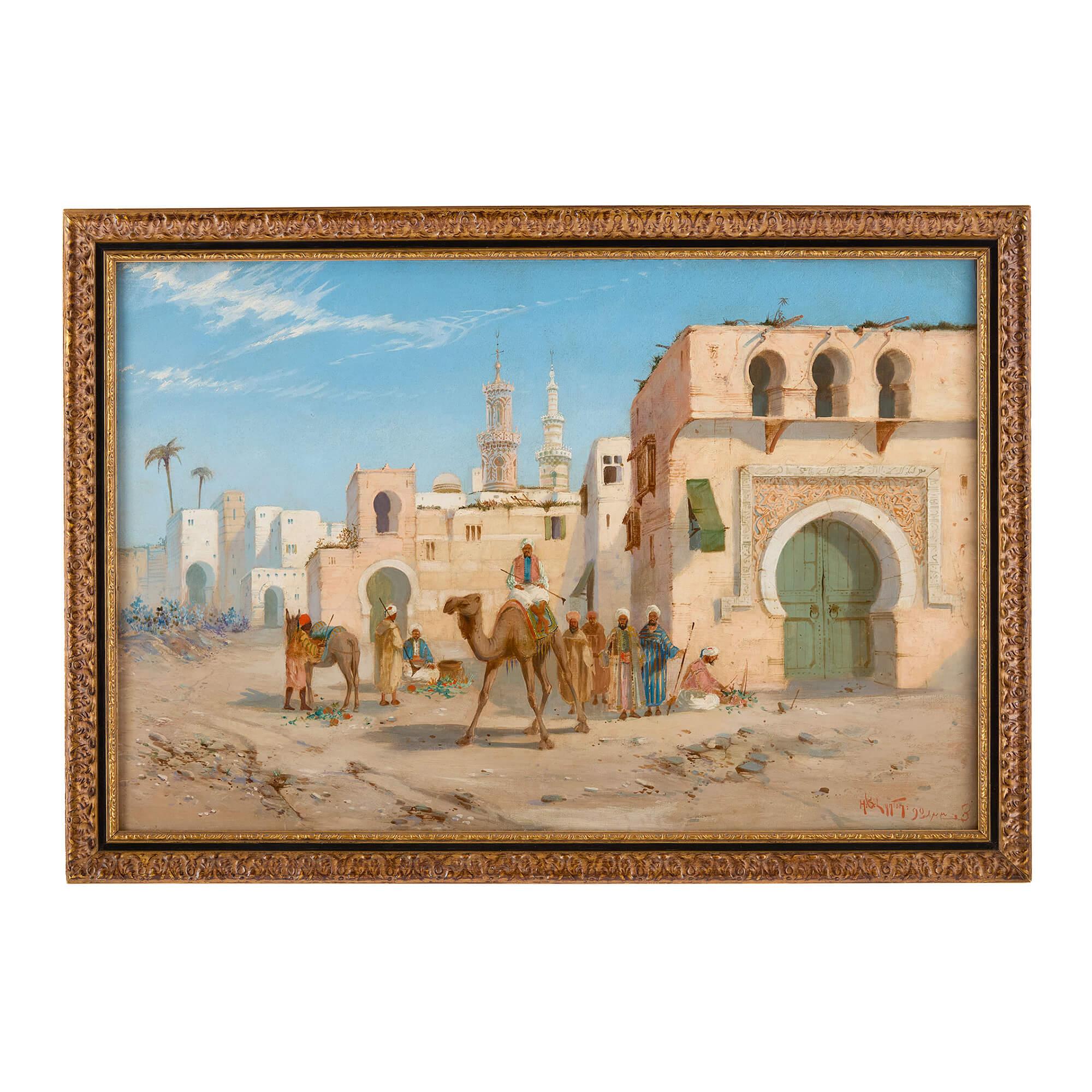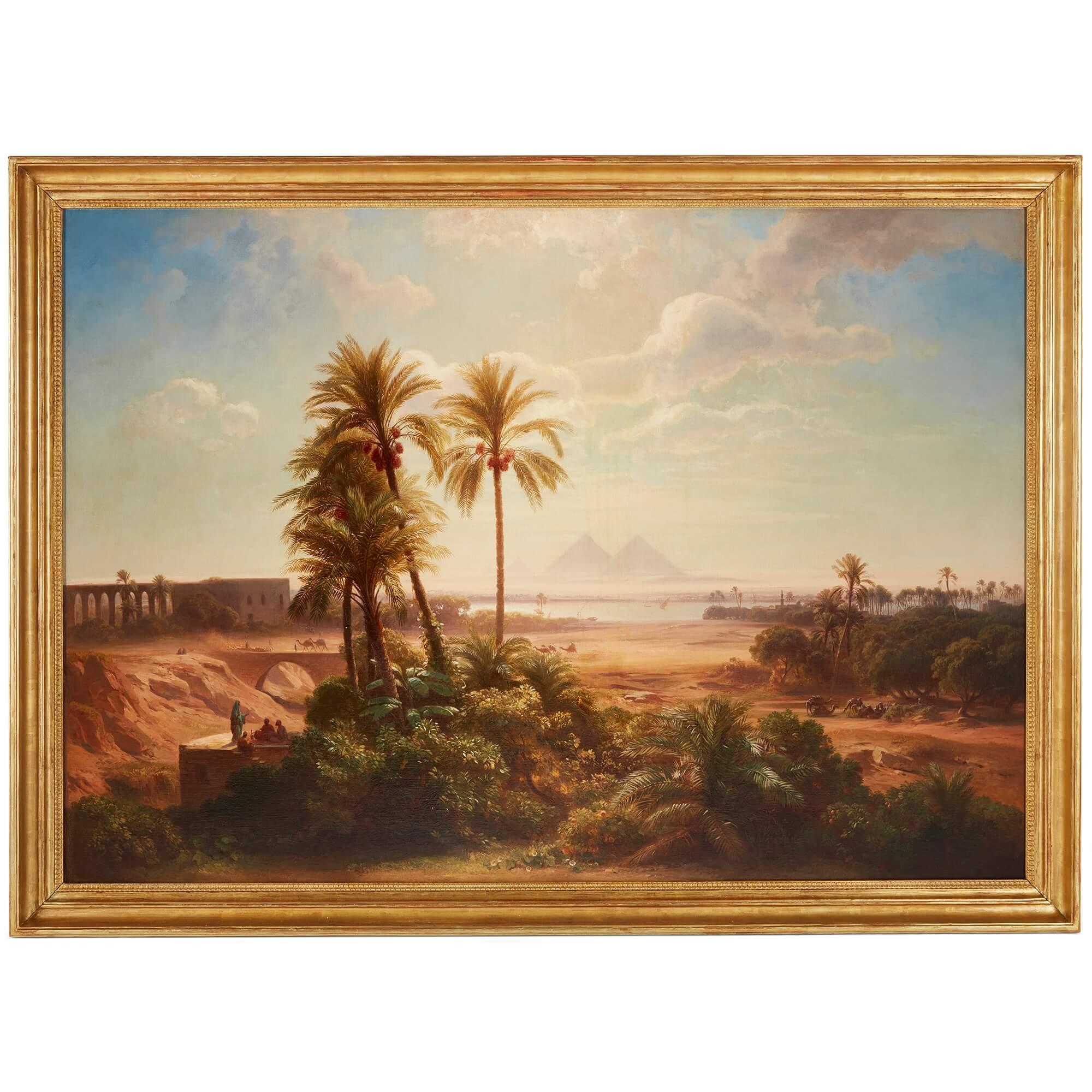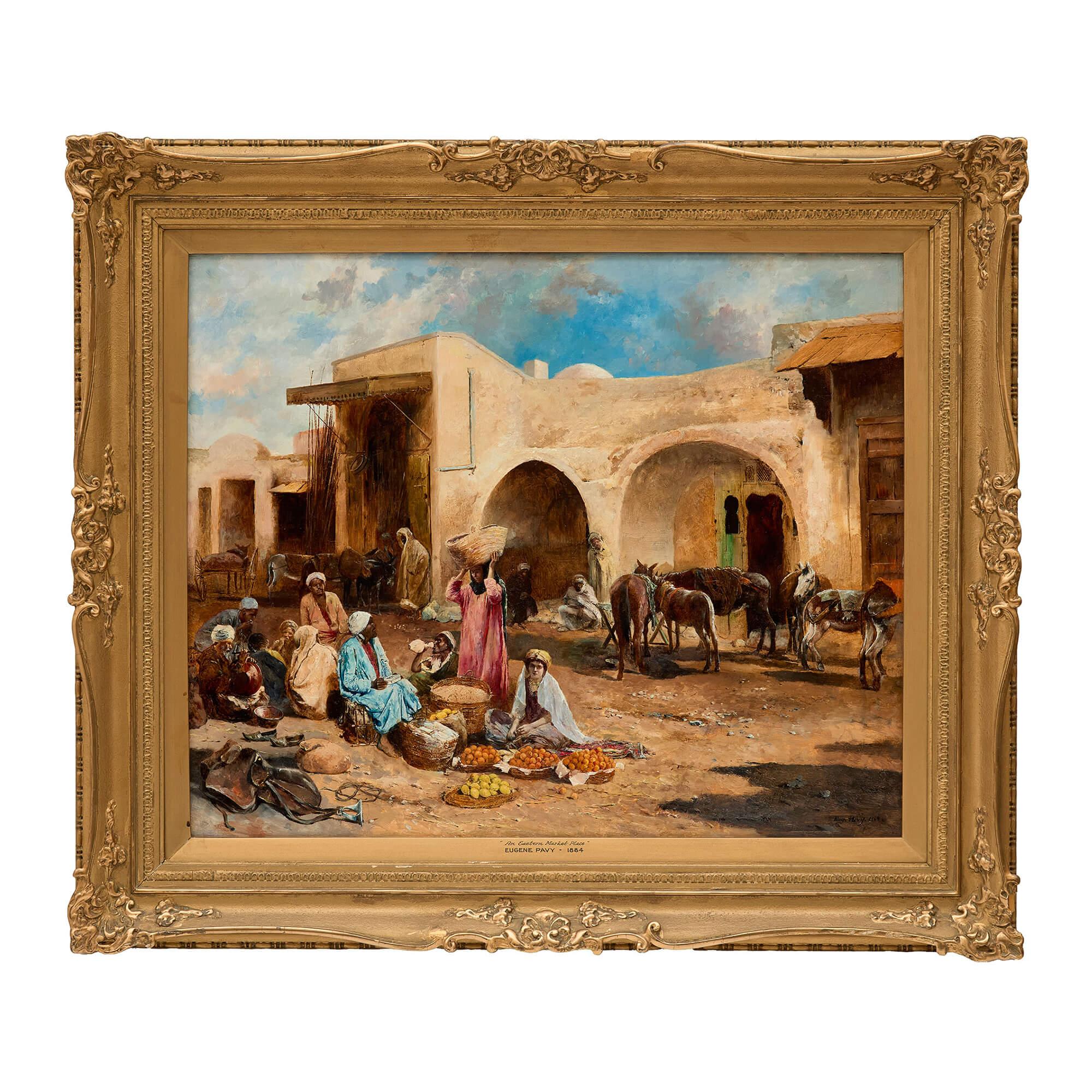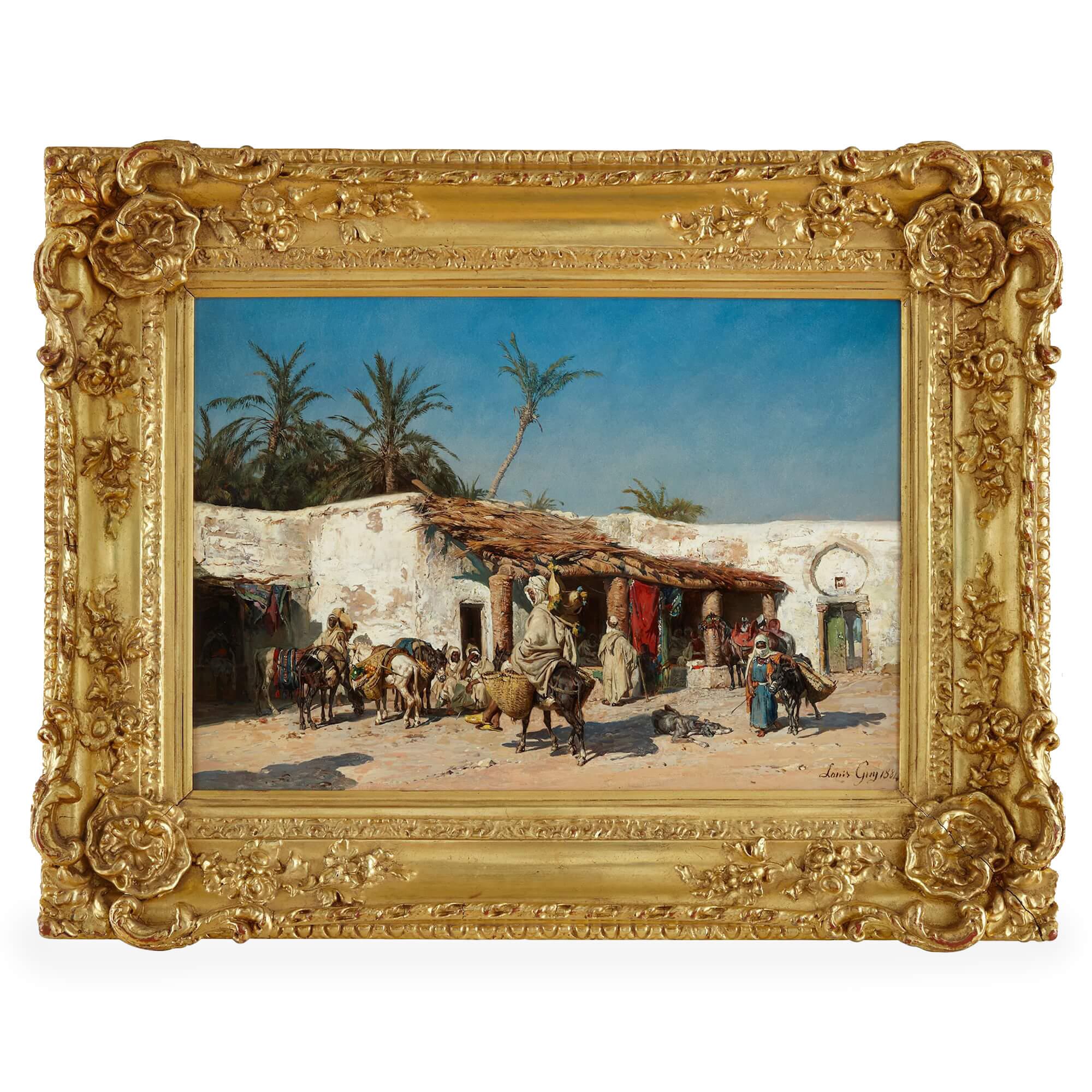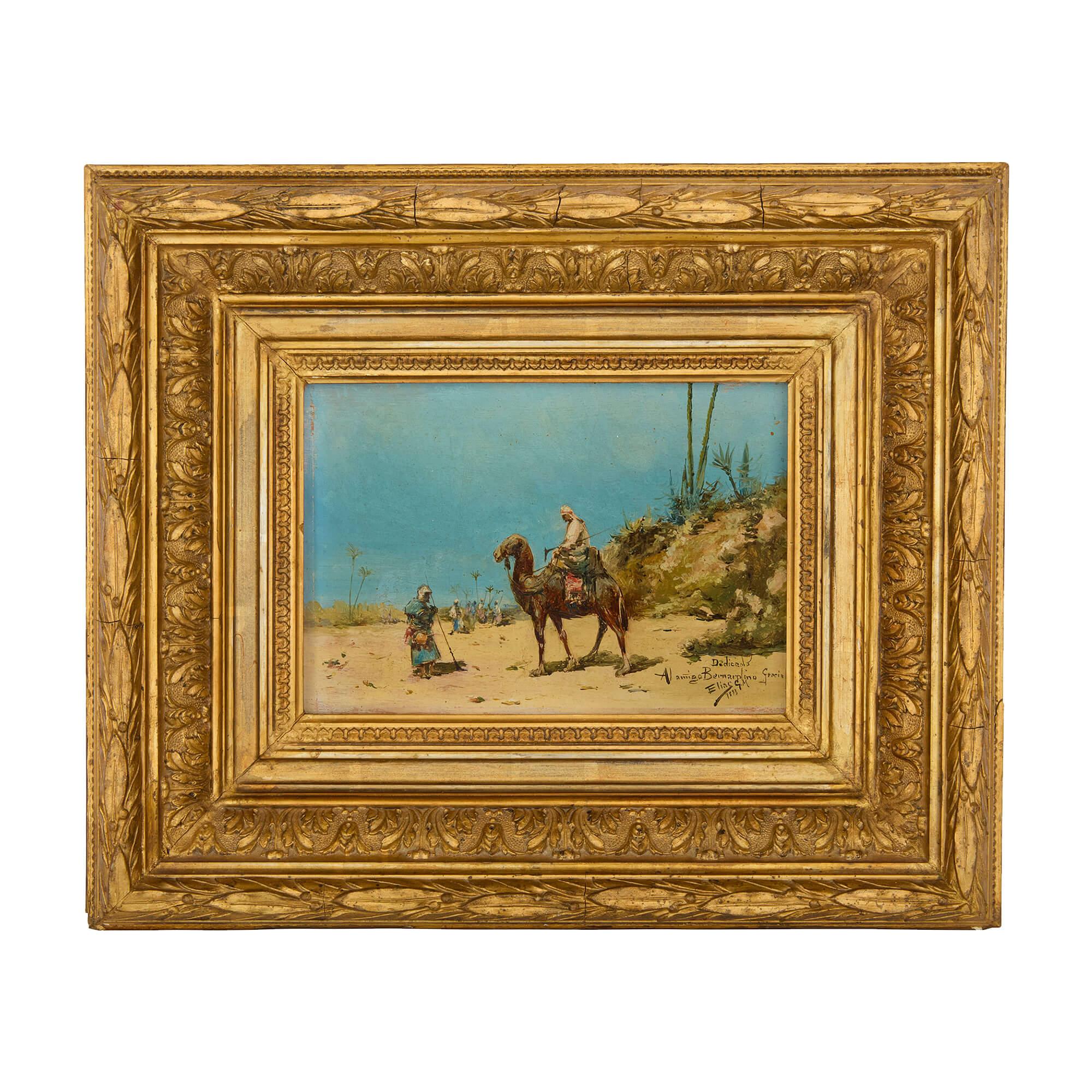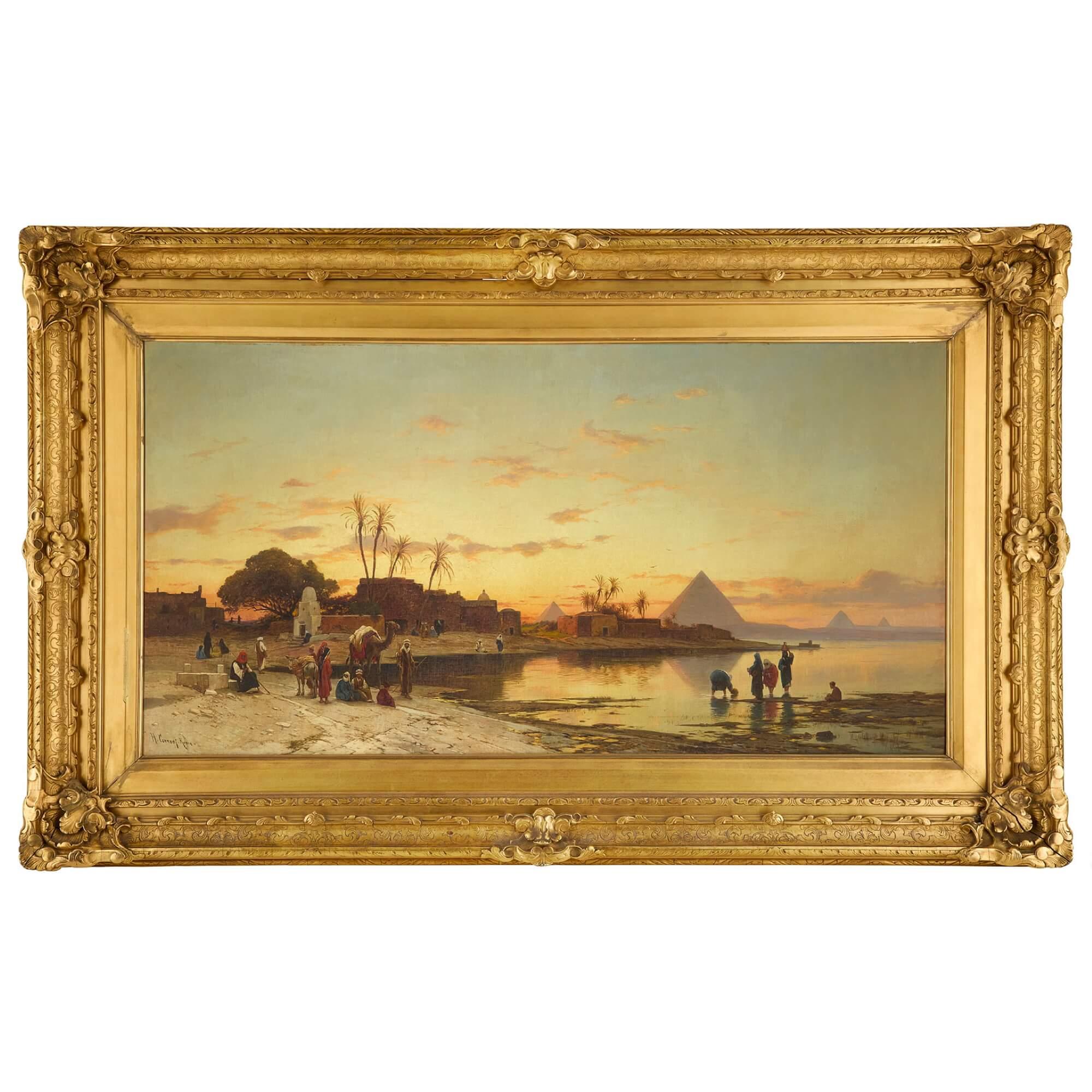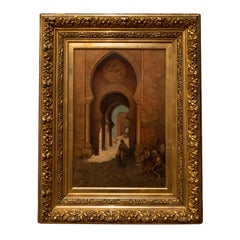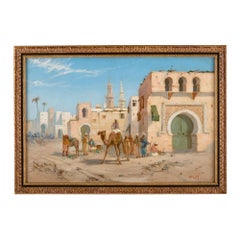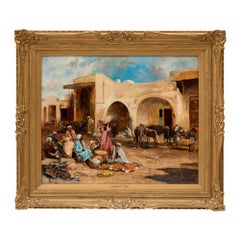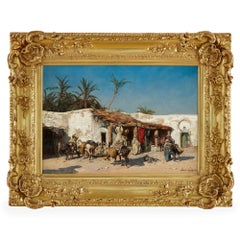Items Similar to Antique 19th Century Large Oil on Canvas Painting Orientalist Palmyra Syria 1880
Want more images or videos?
Request additional images or videos from the seller
1 of 16
Clarence RoweAntique 19th Century Large Oil on Canvas Painting Orientalist Palmyra Syria 1880
$12,500
£9,448.45
€10,857.95
CA$17,406.17
A$19,363.65
CHF 10,150.67
MX$236,619.13
NOK 129,256.12
SEK 121,676.76
DKK 81,050.48
Shipping
Retrieving quote...The 1stDibs Promise:
Authenticity Guarantee,
Money-Back Guarantee,
24-Hour Cancellation
About the Item
A fine & important, large 19th century oil on canvas Orientalist painting by the talented painter Clarence Henry Roe, (1850-1909), the painting depicting the historic city of Palmyra, Syria, circa 1880.
This painting depicts Palmyra Syria, a city rich in history that dates back to the Neolithic period, this work of the city and it's architecture from the Roman period. Sadly the city was destroyed by ISIS in 2015. The painting is beautifully & skillfully executed, signed lower right, it is housed in the original gilded frame, both the painting and frame are in very good condition. A fine & important work ready to hang & grace your wall.
Clarence Roe was an exceedingly talented artist and came from a family of artists, including his parents, three brothers & one sister. He was classically trained at The Royal Academy, London and was known mainly for prodigious landscapes, Roe had produced work influenced by Landseer, Turner, Herring & Copely. His mother was the daughter of E. A. Baily the sculptor of Nelson on the column in Trafalgar Sq., London. He was a prolific & sucessful artist, he had a colorful life and sadly was plagued by alcohol and tragically in later life was incarcerated. His work is located in many museums and galleries and private collections,
A very similar, yet almost half the size of this work and the same subject matter is housed in the Ferens Art Gallery, Kingston Upon Hull, UK, accession number KINCM:2005.6118, this work can be seen online at the Ferens Art Gallery website.
- Creator:Clarence Rowe (1878 - 1930, American)
- Dimensions:Height: 36.23 in (92 cm)Width: 48.04 in (122 cm)Depth: 3.15 in (8 cm)
- Medium:
- Period:
- Condition:Very Good condition.
- Gallery Location:Portland, OR
- Reference Number:Seller: BB-99321stDibs: LU1366213658322
About the Seller
5.0
Platinum Seller
Premium sellers with a 4.7+ rating and 24-hour response times
Established in 1990
1stDibs seller since 2020
57 sales on 1stDibs
Typical response time: 1 hour
- ShippingRetrieving quote...Shipping from: Portland, OR
- Return Policy
Authenticity Guarantee
In the unlikely event there’s an issue with an item’s authenticity, contact us within 1 year for a full refund. DetailsMoney-Back Guarantee
If your item is not as described, is damaged in transit, or does not arrive, contact us within 7 days for a full refund. Details24-Hour Cancellation
You have a 24-hour grace period in which to reconsider your purchase, with no questions asked.Vetted Professional Sellers
Our world-class sellers must adhere to strict standards for service and quality, maintaining the integrity of our listings.Price-Match Guarantee
If you find that a seller listed the same item for a lower price elsewhere, we’ll match it.Trusted Global Delivery
Our best-in-class carrier network provides specialized shipping options worldwide, including custom delivery.More From This Seller
View All19th century French Barbizon School Painting oil on Canvas Landscape circa 1840
Located in Portland, OR
19th century French Barbizon School Painting, oil on canvas signed "Marin", Circa 1840. A very attractive bucolic, pastoral landsacpe scene with sheep grazing on the banks of a lake ...
Category
Early 19th Century Barbizon School Landscape Paintings
Materials
Canvas, Oil
Antique Oil on Canvas Orientalist Painting Moorish Spain Gate of The Sun Toledo
Located in Portland, OR
A large & important Orientalist oil on canvas painting, Moorish Spain, by Pollok Sinclair Nesbit (1848-1922) ASRA, "The Gate of the Sun" Toledo, 1872.
A member of The Royal Scottish ...
Category
1870s Realist Interior Paintings
Materials
Oil, Canvas
Antique British Oil Painting Seascape Coast Scene Shipwreck Landscape Horses
Located in Portland, OR
A very good antique 19th century British oil on canvas painting, seascape coastal scene by Samuel C. Bird, circa 1870.
This very attractive oil on canvas painting depicts a coastal s...
Category
1870s English School Landscape Paintings
Materials
Oil, Canvas
Antique 19th Century Maritime Seascape War Ship Oil Painting HMS Britannia 1835
Located in Portland, OR
A fine & large antique maritime oil painting of the war ship HMS Britannia, by Robert Strickland Thomas (1787-1853), the painting circa 1835.
The painting depicts HMS Britannia broadside with several other war ships of the British fleet, most likely returning from the Mediterranean.
In the foreground are several small boats with sailors variously occupied attending to them. A yacht with a crowded deck is visible on the left. In the center foreground there is a barrel or possibly a buoy in the water, a device commonly employed in some of Thomas's paintings.
To the verso is an old auction label from the 1920s and another partial label, there are also some annotations on the stretcher with details of photographic images of the painting.
There is also an old label of ownership "Mrs. Strange 6 Elvaston Place", this address was a large Georgian house in the prestigious London borough of South Kensington.
The painting is in very good condition, this investment quality antique maritime painting...
Category
1830s English School Landscape Paintings
Materials
Oil, Canvas
Antique Flemish Oil on Panel Francois Backvis Shepherd Sheep Flock Painting 1880
By François Backvis
Located in Portland, OR
A good antique oil on panel landscape painting by the Flemish artist, Francois Backvis (1857-1926).
The painting circa 1880 depicting the parable of the lost sheep from the gospels of Matthew & Luke. The painting shows a stormy landscape with the shepherd and his flock, the shepherd is holding the lost sheep under his arm in front of a large stone crucifix...
Category
Late 19th Century Flemish School Landscape Paintings
Materials
Oil, Panel
Antique Oil on Canvas Seascape Maritime Ships Painting by William Turner Davey
Located in Portland, OR
Large antique Oil on Canvas maritime seascape Painting of a harbor at the Coast, by William Turner Davey (1818-1900), the painting signed and dated 1843. The painting depicts a harbo...
Category
1840s Landscape Paintings
Materials
Canvas, Oil
You May Also Like
Large 19th Century British Orientalist Oil Painting by Henry Lynton Stanton
By Henry Stanton Lynton
Located in London, GB
Large 19th century British Orientalist oil painting by Henry Lynton Stanton
British, 1890
Canvas: Height 51cm, width 76cm
Frame: Height 59cm, width 84cm, depth 5cm
This vibrant oil ...
Category
Late 19th Century Figurative Paintings
Materials
Canvas, Oil
Large Orientalist Painting of an Egyptian Landscape by Löffler
Located in London, GB
Large Orientalist painting of an Egyptian landscape by Löffler
German, c. 1850
Canvas: Height 103cm, width 148cm
Frame: Height 116cm, width 159.5cm, depth 8cm
This superb oil paint...
Category
19th Century Landscape Paintings
Materials
Canvas, Wood, Oil, Wood Panel
Antique French Orientalist Oil Painting by Pavy
By Eugène Pavy
Located in London, GB
Antique French Orientalist oil painting by Pavy
French, 1884
Panel: Height 53cm, width 65cm
Frame: Height 74cm, width 84cm, depth 8cm
This striking 19th-century Orientalist paintin...
Category
1880s Victorian Figurative Paintings
Materials
Oil, Panel
Large Antique Orientalist Oil Painting by Jean Baptiste Louis Guy
Located in London, GB
Large antique Orientalist oil painting by Jean Baptiste Louis Guy
French, 1884
Canvas: Height 49cm, width 67cm
Frame: Height 72cm, width 91cm, depth 9cm
Pai...
Category
Late 19th Century Figurative Paintings
Materials
Canvas, Oil
19th Century Orientalist oil Painting of a Desert Scene by González Manso
Located in London, GB
19th century Orientalist oil painting of a desert scene by González Manso
Spanish, 1893
Panel: Height 14cm, width 20cm
Frame: Height 28.5cm, width 34cm, depth 6cm
This captivating o...
Category
Late 19th Century Figurative Paintings
Materials
Oil, Panel
Large Orientalist Painting of the Banks of the Nile by H. Corrodi
By Hermann Corrodi
Located in London, GB
Large Orientalist painting of the banks of the Nile by H. Corrodi
Italian, Late 19th Century
Canvas: Height 66cm, width 126m
Frame: Height 98cm, width 158cm, depth 7cm
This beauti...
Category
Late 19th Century Landscape Paintings
Materials
Canvas, Wood, Oil
More Ways To Browse
Large Paintings 19th Century
Very Large Antique Landscape Oil Paintings
Oil Painting Roman Landscape
Antique Syrian
1880 Large Oil Paintings
Landscape Oil Painting Orientalist
Neolithic Art
Nelson Brothers
Antique Cope
Trafalgar Painting
Nelson Roman
Antique Half Hulls
Rowe Landscape Oil Painting
Clarence Henry Roe
John Law
Paintings Of Courtyards
Wood Farm Signs
Danish Landscape Oil
